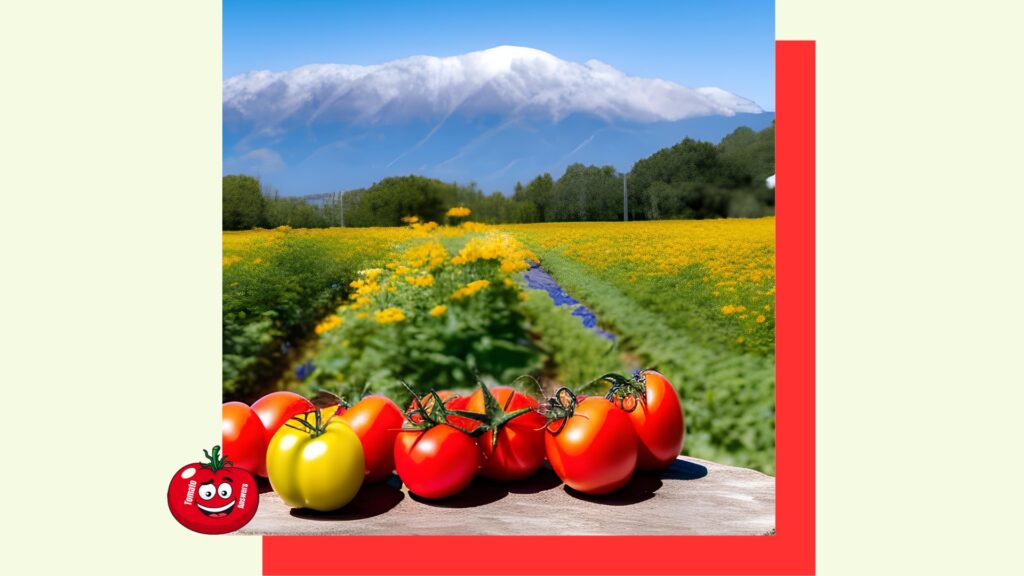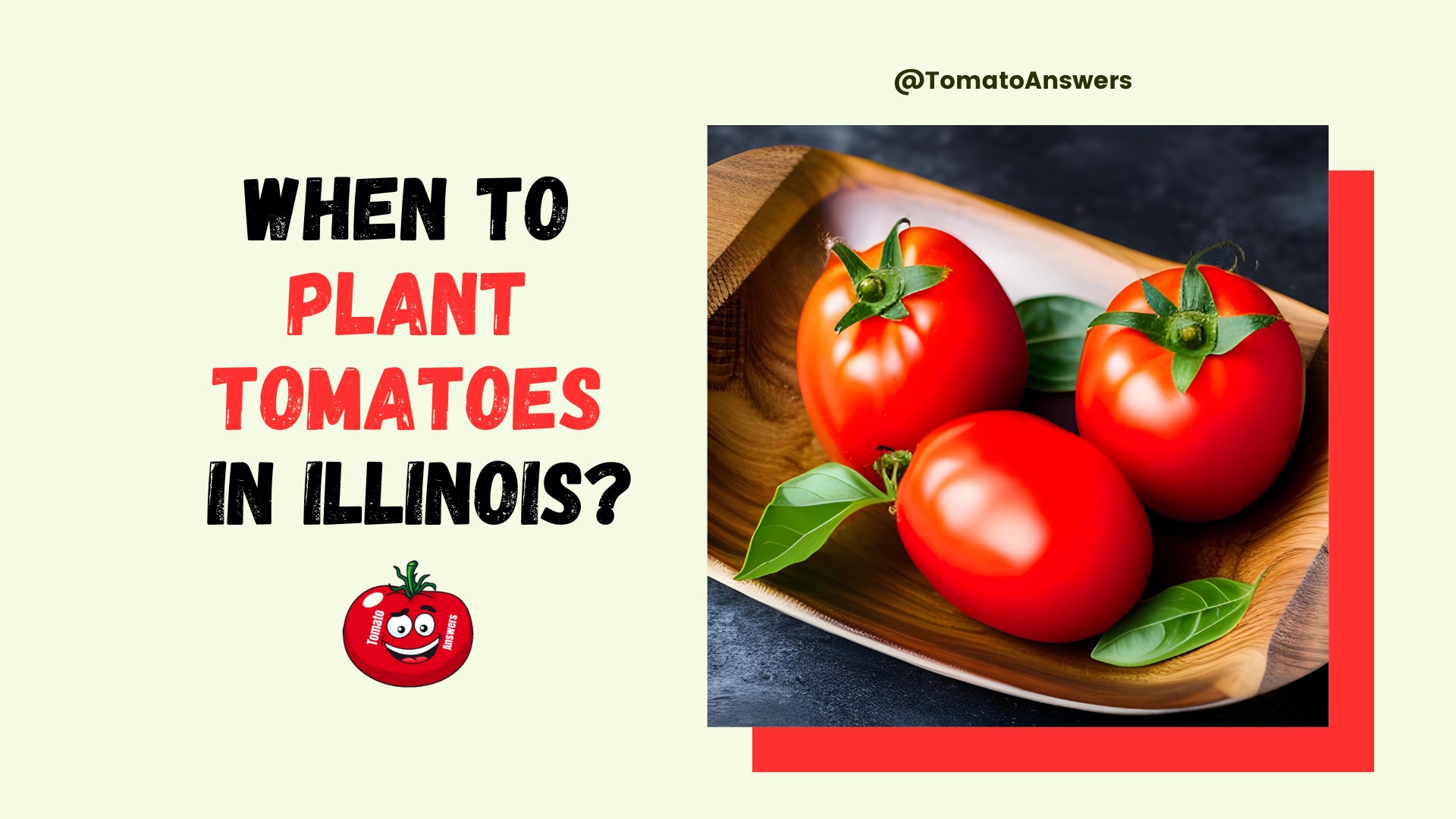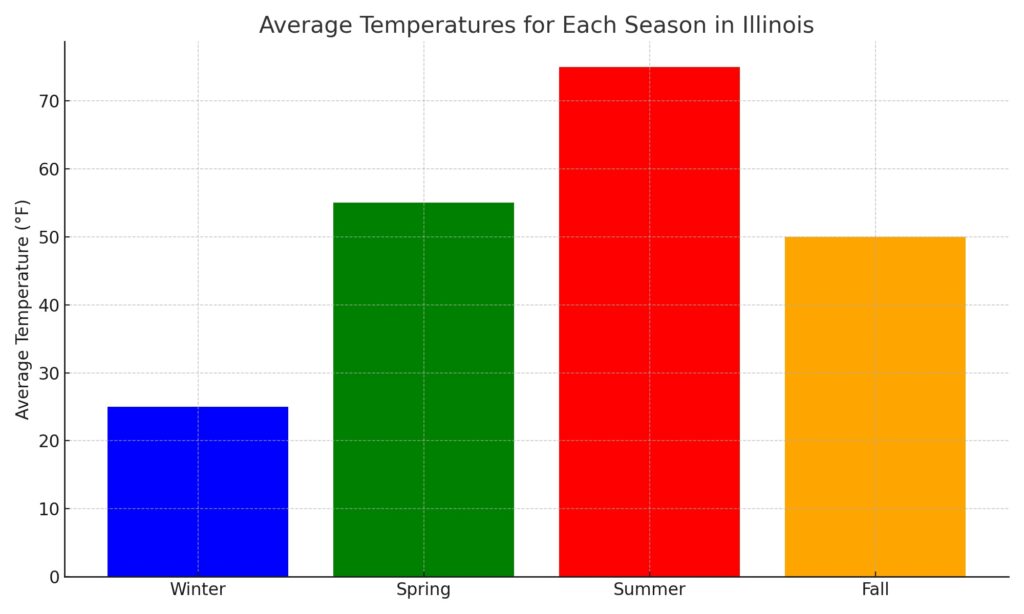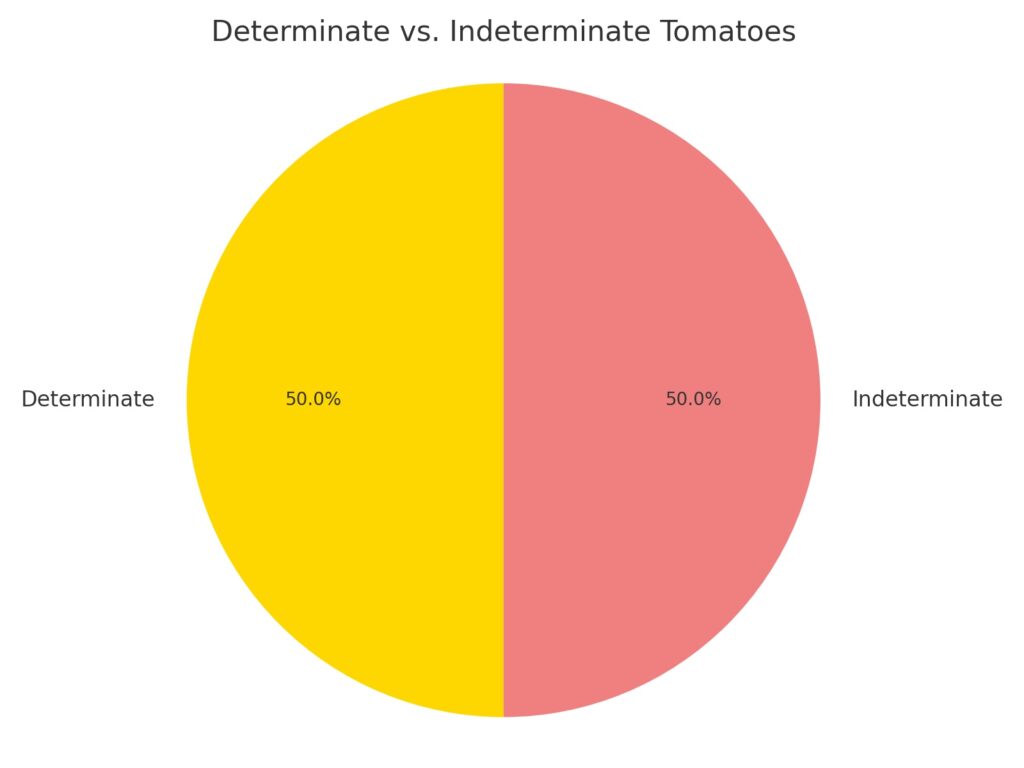In the heartland of America lies Illinois, where fertile soil and a temperate climate are ideal for growing tomatoes. The decision of when to plant these beloved vegetables can significantly impact their success, as they require specific temperatures and growing periods to thrive.
To embark on a successful tomato-growing journey in Illinois, it is crucial to have a comprehensive understanding of the state’s climate, choose appropriate tomato varieties, and employ effective planting techniques.
Illinois experiences four distinct seasons, with cold winters and hot summers. This article aims to guide aspiring tomato growers in Illinois by providing valuable insights into the optimal time to plant tomatoes.
We will explore factors that influence this decision, including temperature fluctuations throughout the year and frost dates specific to different regions within the state. Additionally, we will delve into selecting suitable tomato varieties for Illinois’s unique climate.
Whether you are an experienced gardener or just starting, this article will equip you with essential knowledge and practical tips for successfully growing tomatoes in Illinois.

So let us begin our journey into tomato cultivation in the Land of Lincoln!
Key Takeaways
- Planting zones and frost dates are essential when determining the best time to plant tomatoes in Illinois.
- Starting tomato seeds indoors is recommended 6-8 weeks before the last frost date to ensure a successful harvest.
- Creating microclimates around tomato plants can help protect them from extreme temperatures and maximize sunlight exposure.
- Proper care, such as watering techniques and disease prevention, is essential for successful tomato cultivation in Illinois.
Understanding the Climate of Illinois
The climate of Illinois is characterized by four distinct seasons, with cold winters and hot summers. Understanding planting zones and frost dates is crucial for successful tomato cultivation in Illinois.
The state is divided into different planting zones based on average annual minimum temperatures, which helps determine the appropriate time to plant tomatoes. Frost dates also play a significant role in deciding when it is safe to plant tomatoes outdoors.
Transitioning into choosing the suitable tomato varieties, it is important to consider…
Choosing the Right Tomato Varieties In Illinois
- Choosing suitable tomato varieties involves considering factors such as determinate vs. indeterminate, early-maturing vs. late-maturing.
- Determinate tomatoes have a compact growth habit and produce fruit all at once, making them suitable for canning or preserving.
- On the other hand, indeterminate tomatoes continue to grow and produce fruit throughout the season, offering a continuous harvest.
- Early-maturing tomato varieties allow for an earlier harvest, while late-maturing types require more time to mature but may offer higher yields or specific flavor profiles.
Determinate vs. Indeterminate
- To understand the appropriate timing for planting tomatoes in Illinois, it is essential to distinguish between determinate and indeterminate varieties.
- Determinate tomatoes are compact and bushy, reaching a specific height and producing fruit simultaneously.
- Indeterminate varieties continue to grow and produce fruit throughout the season.
- Pruning techniques differ for each type, with determinate plants requiring less pruning.
- Understanding these distinctions will help when considering early-maturing vs. late-maturing varieties for planting in Illinois.
Early-Maturing vs. Late-Maturing
Early-maturing and late-maturing tomato varieties offer different options for gardeners to extend their harvest season and ensure a continuous supply of ripe tomatoes throughout the summer months.
Early maturing varieties typically produce fruit within 55-70 days, making them suitable for regions with shorter growing seasons or gardeners who want early yields.
Late-maturing varieties take longer, usually 75-90 days, but they often yield larger fruits and have a longer shelf life. To get started with these varieties, it is vital to understand the process of creating seeds indoors. [Transition sentence into a subsequent section about ‘starting seeds indoors’.]
Starting Seeds Indoors In Illinois
This discussion will focus on the timing for starting seeds indoors and transplanting seedlings outdoors.
Starting seeds indoors allows gardeners to get a head start on the growing season by providing optimal conditions for germination and early growth.
The ideal time to start seeds indoors depends on the specific plant, but generally, creating them 6-8 weeks before the last expected frost date in your area is recommended.
Transplanting seedlings outdoors should be done when they have developed strong roots and can withstand outdoor temperatures and conditions, typically after all danger of frost has passed.
Timing for Indoor Seed Starting In Illinois
Indoor seed starting for tomatoes in Illinois requires careful consideration of the appropriate timing. Timing for outdoor planting is crucial to ensure optimal growth and productivity.
It is essential to start tomato seeds indoors 6-8 weeks before the last expected frost date, typically around mid-April in Illinois. This allows the seedlings to grow strong and healthy enough before transplanting them outdoors.
Additionally, starting seeds indoors helps prevent common tomato pests and diseases from affecting young plants when they are most vulnerable. Proper care must be taken during the transplanting process to transition from indoor to outdoor cultivation successfully.
Transplanting Seedlings Outdoors In Illinois
To successfully transition seedlings from the controlled environment of indoor cultivation to the unpredictability of outdoor conditions, following proper transplanting techniques and providing them with a conducive growing environment is essential.
Transplanting techniques involve hardening off the seedlings by gradually exposing them to outdoor conditions, ensuring they are well-watered before transplantation, and handling them gently to avoid damage.
Common mistakes include transplanting too early or late and disturbing the roots excessively. Moving forward, let’s discuss direct sowing in the garden.
Direct Sowing in the Garden In Illinois
This discussion will focus on three critical points regarding direct sowing in the garden:
- The best soil temperature for planting varies depending on the specific plant species but generally falls within 50 to 85 degrees Fahrenheit.
- Proper spacing is crucial to ensure adequate air circulation and prevent overcrowding, which can lead to disease and nutrient competition among plants.
- It is essential to understand the appropriate planting depth as it directly affects seed germination and subsequent plant growth.
Best Soil Temperature for Planting In Illinois
Optimal soil temperature is crucial for successful tomato planting in Illinois. To ensure the best planting practices and optimal growing conditions, it is essential to understand the ideal soil temperature range for tomatoes.
The table below provides recommended soil temperatures for planting tomatoes based on research and expert advice:
| Soil Temperature Range (°F) | Tomato Planting |
|---|---|
| Below 50 | Not recommended |
| 50-55 | Not ideal |
| 55-60 | Recommended |
| Above 60 | Optimal |
Proper spacing and planting depth are equally important factors when planting tomatoes.
Proper Spacing and Planting Depth
An essential factor to consider when planting tomatoes is the spacing between plants and the depth at which they are planted, as it can significantly impact their growth and yield.
One interesting statistic is that research has shown that tomatoes planted too closely together can reduce airflow, increase disease risk, and lower fruit quality. To ensure proper spacing, tomato plants should be placed approximately 24-36 inches apart, allowing enough room for air circulation and preventing overcrowding.
Additionally, planting depth is crucial as it affects root development and stability. Tomato seedlings should be transplanted deep into the soil, burying the stem to the first set of leaves to encourage strong root growth. This will provide a solid foundation for the plant and help it withstand adverse weather conditions such as strong winds or heavy rains.
Moving on to protecting tomatoes from cold weather…
Protecting Tomatoes from Cold Weather In Illinois
- This discussion will focus on two critical points for protecting tomatoes from cold weather: using mulch and row covers and creating microclimates.
- Mulching is a common practice that involves covering the soil around tomato plants with organic material such as straw or leaves, which helps retain heat and insulate the roots.
- Row covers are another effective protection method, as they create a barrier between the plants and the cold air, acting as a shield against frost.
- Additionally, creating microclimates can be achieved by strategically placing tomato plants in areas that receive more sunlight or are sheltered from cold winds, maximizing their exposure to warmth and minimizing the risk of damage from low temperatures.
Using Mulch and Row Covers
Using mulch and row covers can effectively enhance tomato growth in Illinois.
Mulching helps to retain soil moisture, regulate temperature, and suppress weeds around tomato plants. It also provides insulation during cold weather, protecting the roots from frost damage.
Row covers create a physical barrier that shields tomatoes from harsh winds and low temperatures. These techniques aid in creating microclimates that promote optimal conditions for tomato cultivation in Illinois without additional steps.
Creating Microclimates In Illinois
To optimize the growth of tomato plants, establishing microclimates can effectively address concerns about adverse weather conditions and create more favorable environments for cultivation.
Creating microclimates involves manipulating the immediate surroundings of tomato plants to maximize sunlight exposure and protect them from harsh winds or extreme temperatures.
This can be done using windbreaks, reflective mulch, or strategically placing taller crops nearby to provide shade.
These techniques help ensure successful tomato growth in Illinois.
10 Tips for Successful Tomato Growing in Illinois
Here are 10 tips for successfully growing tomatoes in Illinois:
1. Choose disease-resistant varieties
Select tomato varieties labeled as resistant to common diseases like early blight, Septoria leaf spot, fusarium wilt, and verticillium wilt. Some good options include Better Boy, Celebrity, and Brandywine.
2. Start seeds indoors
Get a jump on the season by starting seeds indoors 4-6 weeks before transplanting. Use a seed creating mix and grow lights to help seedlings thrive. Harden off before transplanting.
3. Wait until after the last frost
Tomatoes are warm-season crops. Do not transplant into the garden until all danger of frost has passed, around May 10-15 in most parts of Illinois.
4. Give plants plenty of space
Allow 24-36 inches between tomato plants to promote good air circulation. Overcrowding encourages disease issues. Use trellises and cages to support plants as they grow.
5. Use black plastic mulch
Black plastic mulch warms the soil, reduces weeds, and helps retain moisture. Apply before transplanting seedlings out.
6. Water Carefully
Tomatoes need about 1-2 inches of water per week. Use drip irrigation or give deep watering by hand. Avoid overhead watering on leaves, which promotes fungal diseases.
7. Stake and prune plants
Removing suckers and staking/caging keeps tomatoes tidy and improves air circulation. It also prevents fruits from contacting the soil.
8. Control pests
Be vigilant about controlling common pests like hornworms, cutworms, whiteflies, and spider mites which can quickly damage plants.
9. Pick ripe tomatoes promptly
Harvest tomatoes as they ripen to keep plants continually producing. Pull up spent plants by the end of the season.
10. Grow in raised beds
Raised garden beds improve drainage and allow you to thoroughly enrich the soil with organic matter for healthier tomato growth.
By following these tips, Illinois gardeners can grow bountiful crops of juicy, flavorful tomatoes each season. Pay close attention to variety selection, spacing, watering, and pest control for best results.
FAQs About Tomatoes Planting In In Illinois
Can I Grow Tomatoes In September In Illinois?
Yes, you can grow tomatoes in September in Illinois. Choose early maturing varieties and start seeds indoors in late summer for a fall crop. Protect plants from frost with cloches or fabric row covers.
Can I Plant Tomatoes Now In Illinois?
Planting tomatoes now in Illinois is too late for a successful summer crop. Focus on fast-maturing varieties for late summer harvest or plant tomatoes in spring next year.
Can Tomatoes Grow In The Winter In Illinois?
No, tomatoes are warm-season plants that require temperatures above 50 degrees F to grow. They will not survive winter conditions in Illinois. Bring container plants indoors until spring.
Can You Grow Tomatoes In Illinois Summer?
Yes, the hot sunny summers in Illinois are ideal for growing tomatoes. Ensure plants receive 1-2 inches of water weekly and provide mulch to retain moisture.
Can You Grow Tomatoes In The Fall In Illinois?
Tomatoes can be grown in the fall in Illinois by choosing early varieties and starting seeds indoors in late summer. Protect plants from frost using covers and harvest continually once ripe.
Can You Grow Tomatoes In Containers In Illinois?
Container gardening works well for tomatoes in Illinois. Use large pots, quality potting mix, and provide at least 6 hours of sun. Dwarf and determinate varieties are best suited.
Do Tomatoes Need Full Sun In Illinois?
Yes, tomatoes require a minimum of 6-8 hours of direct sun daily. Anything less results in poor growth and low productivity. Select a sunny spot for the best tomato results.
How Do I Stake Or Cage Tomatoes In Illinois?
Install stakes or cages right after transplanting seedlings. Use 5-7 foot stakes pounded 1 foot into the ground. Or cages at least 2 feet wide and over 3 feet tall.
How Late Can You Grow Tomatoes In Illinois?
You can grow tomatoes in Illinois through late October if protecting plants from frost. Harvest green tomatoes before the first fall freeze to ripen indoors.
How Long Do Tomatoes Take To Grow In Illinois?
Tomatoes typically take 60-90 days to reach maturity and produce ripe fruits in Illinois, depending on the variety. Warmer weather speeds growth.
How Much Water Do Tomato Plants Need During The Illinois Summer?
Tomatoes require about 1-2 inches of water per week from irrigation and rainfall during hot Illinois summers. Deep soak the soil, avoiding wet leaves, which encourage diseases.
How Often Do You Water Tomatoes In Illinois?
Tomatoes should be watered deeply 1-2 times per week in Illinois, depending on soil and weather conditions. Check soil between waterings to ensure proper moisture levels are maintained.
How To Grow Tomatoes In Illinois In Pots?
Use at least a 10-gallon container with drainage holes. Choose determinate varieties suited to pots. Use quality potting mix and fertilize regularly. Water when the top inch of soil is dry.
Is Illinois Too Hot For Tomatoes?
The hot summers in Illinois are not too extreme for growing tomatoes, provided plants receive adequate water. Select heat-tolerant varieties and give afternoon shade if temps exceed 90 F.
What Are The Best Heat-Tolerant Tomatoes For Illinois?
Some excellent heat-tolerant tomato varieties for Illinois include Arkansas Traveler, Heatwave, Phoenix, Solar Fire, Florida 91, and Bella Rosa.
What Are The Best Tomatoes To Grow In Illinois?
Great tomato varieties for Illinois include Early Girl, Better Boy, Big Beef, Celebrity, Brandywine, Mr. Stripey, Cherokee Purple, and Rutgers. Choose disease-resistant cultivars.
What Is The Best Crop To Grow In Illinois?
The best crops for Illinois vegetable gardens include tomatoes, sweet corn, zucchini, green beans, potatoes, peppers, cucumbers, melons, peas, radishes, and carrots.
What Are Some Common Diseases That Affect Tomatoes In Illinois?
Tomatoes in Illinois are prone to early blight, Septoria leaf spot, verticillium wilt, fusarium wilt, blossom end rot, and tobacco mosaic virus. Start with resistant varieties and practice prevention.
What Plants Are Best For Illinois Heat?
Great plants for Illinois heat include melons, okra, sweet potatoes, peppers, eggplant, cucumbers, squash, basil, tomatillos, and heat-tolerant tomato varieties. Ensure adequate moisture.
What Plants Grow In Winter In Illinois?
Cold hardy plants that grow in Illinois winters include kale, spinach, lettuce, carrots, radishes, garlic, onions, and some root veggies. Use cold frames or hoop houses to extend the season.
When Is The Best Time To Plant Tomatoes In Illinois?
Most gardeners in Illinois plant tomatoes around May 10-20 after the average last spring frost date. Start seeds indoors 4-6 weeks earlier for best results.
When To Plant Creole Tomatoes In Illinois?
Plant Creole tomato seeds indoors from late March to early April. Transplant seedlings outdoors in mid-May once warm temps arrive and after the last average frost date.
When To Plant Fall Tomatoes In Illinois?
Start seeds indoors from late June to July for a fall tomato crop in Illinois. Harden off and transplant seedlings into the garden around late July to early August.
When To Plant Summer Or Fall Tomatoes In Illinois?
Plant summer tomatoes in May and fall tomatoes in late July for harvests before the first fall frost. Choose short-season varieties for fall crops in Illinois.
When To Plant Tomato Plants In South Illinois?
In southern Illinois zones, set out transplants 1-2 weeks earlier than the rest of the state after danger of frost. Aim for late April to early May.
When To Plant Tomato Seeds In Illinois?
Most tomato seeds are started indoors in Illinois 4-6 weeks before the anticipated transplant date, around early to mid-April. Use grow lights and heat mats as needed.
When To Plant Tomatoes In Central Illinois?
Central Illinois gardeners generally transplant tomatoes into the garden around the middle of May after the threat of frost has passed.
When To Plant Tomatoes In North Illinois?
In northern Illinois, plant tomatoes after the average last spring frost, typically mid to late May. Start seeds indoors in April.
When To Plant Tomatoes In South Illinois?
Tomatoes are often planted earlier in southern Illinois, around late April to early May, after the danger of frost has passed. Start seeds indoors accordingly.
When To Plant Tomatoes Seeds In North Illinois?
In northern Illinois, start tomato seeds indoors around mid to late March. Grow the seedlings until they are ready to transplant outside in May.
Why Are My Tomatoes Not Ripening In Illinois?
Tomatoes may fail to ripen in Illinois due to extremes in temperature, improper watering, lack of nutrients, or disease. Ensure proper growing conditions for the variety.
What is Illinois’s average later frost date, and how does it affect tomato planting?
The average last frost date in Illinois marks the optimal tomato planting time. This crucial information is like a compass guiding gardeners toward successful cultivation, ensuring that tomatoes are planted after the danger of frost has passed.
Can I plant tomatoes directly in the garden or start them indoors?
Starting tomatoes indoors allows for an early start to the growing season, providing a more extended harvest period. Planting tomatoes directly in the garden may result in faster growth due to fewer transplanting setbacks but can be limited by weather conditions and require careful soil preparation.
What common pests and diseases affect tomatoes in Illinois, and how can I prevent them?
Common pests and diseases that affect tomatoes in Illinois include aphids and early blight. To control aphids, use insecticidal soaps or neem oil. Prevent early blight by ensuring proper plant spacing, removing infected leaves, and applying fungicides when necessary.
How often should I water my tomato plants, and what is the best way to do it?
- Tomato plants require regular watering to ensure their optimal growth and productivity.
- The best time to water tomatoes is in the morning, which allows the foliage to dry before evening and reduces the risk of disease. It is important to water deeply, ensuring that the root zone receives adequate moisture without saturating the soil.
- Avoid overhead watering methods that wet the leaves, as this can increase susceptibility to fungal diseases. Instead, direct water at the base of the plant using a soaker hose or drip irrigation system.
- Regularly monitor soil moisture levels by checking the top few inches of soil – if it feels dry, it’s time to water again. Remember, consistent and appropriate watering is vital to maintaining healthy tomato plants.
Are there any specific tips or tricks for maximizing tomato yield in Illinois’s climate?
“To maximize tomato yield in Illinois’s climate, it is crucial to employ soil preparation techniques such as amending with organic matter and ensuring proper drainage. Additionally, selecting tomato varieties that are well-suited to the region’s conditions can greatly enhance productivity.”
Conclusion: Tomatoes Planting In Illinois
In conclusion, planting tomatoes in Illinois requires carefully considering the climate and selecting appropriate tomato varieties. Starting seeds indoors and direct sowing in the garden are viable options for tomato cultivation. It is essential to protect tomatoes from cold weather using mulching and cloche covers.
By following these tips, gardeners can ensure successful tomato growing in Illinois. For example, a study conducted by researchers at the University of Illinois found that early-maturing tomato varieties had higher yields when planted in late April compared to traditional planting dates in May.


